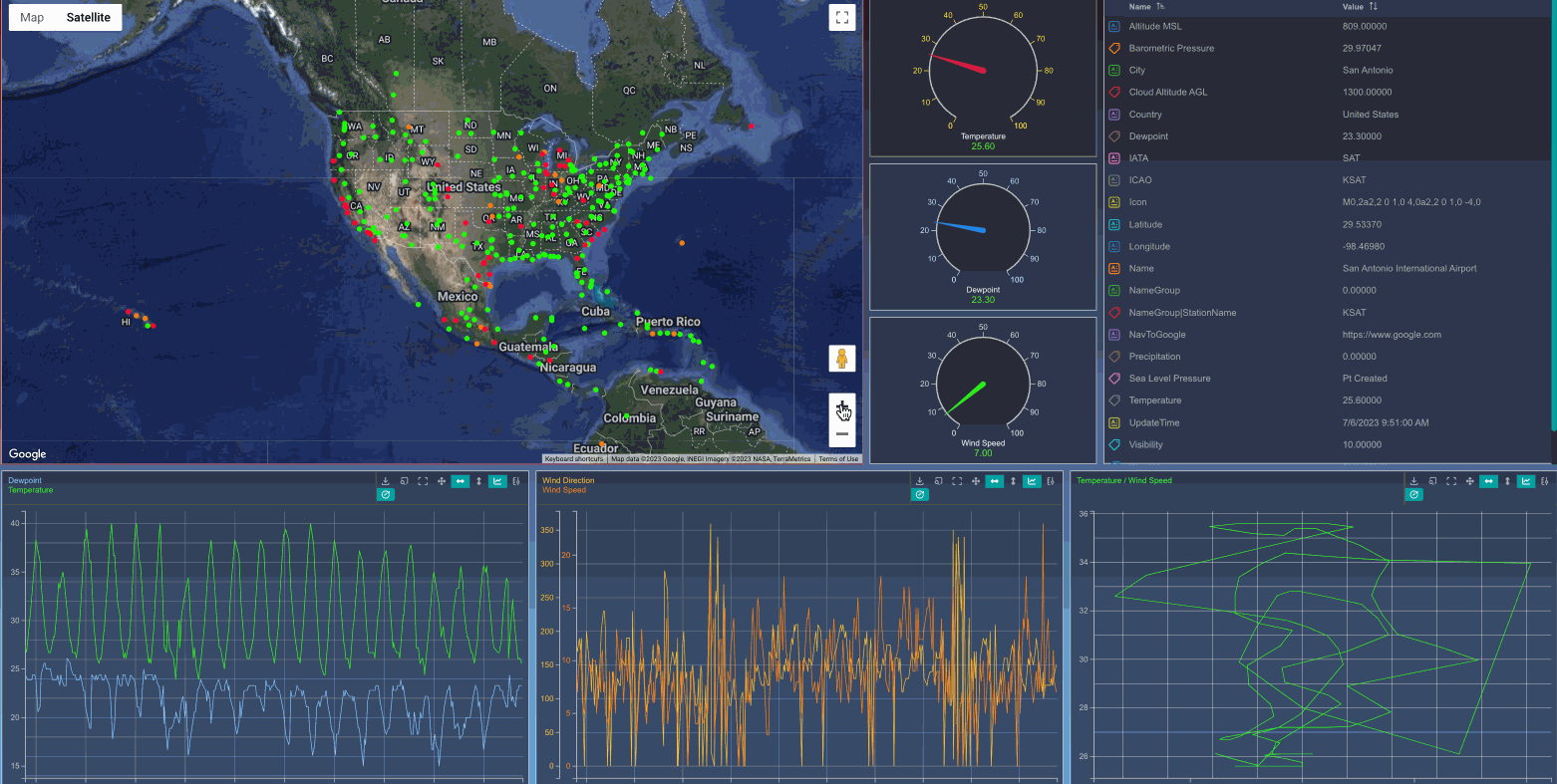The Map Component displays geographical data on interactive maps. It allows you to place data points on a map, making it easier to analyze location-based information.
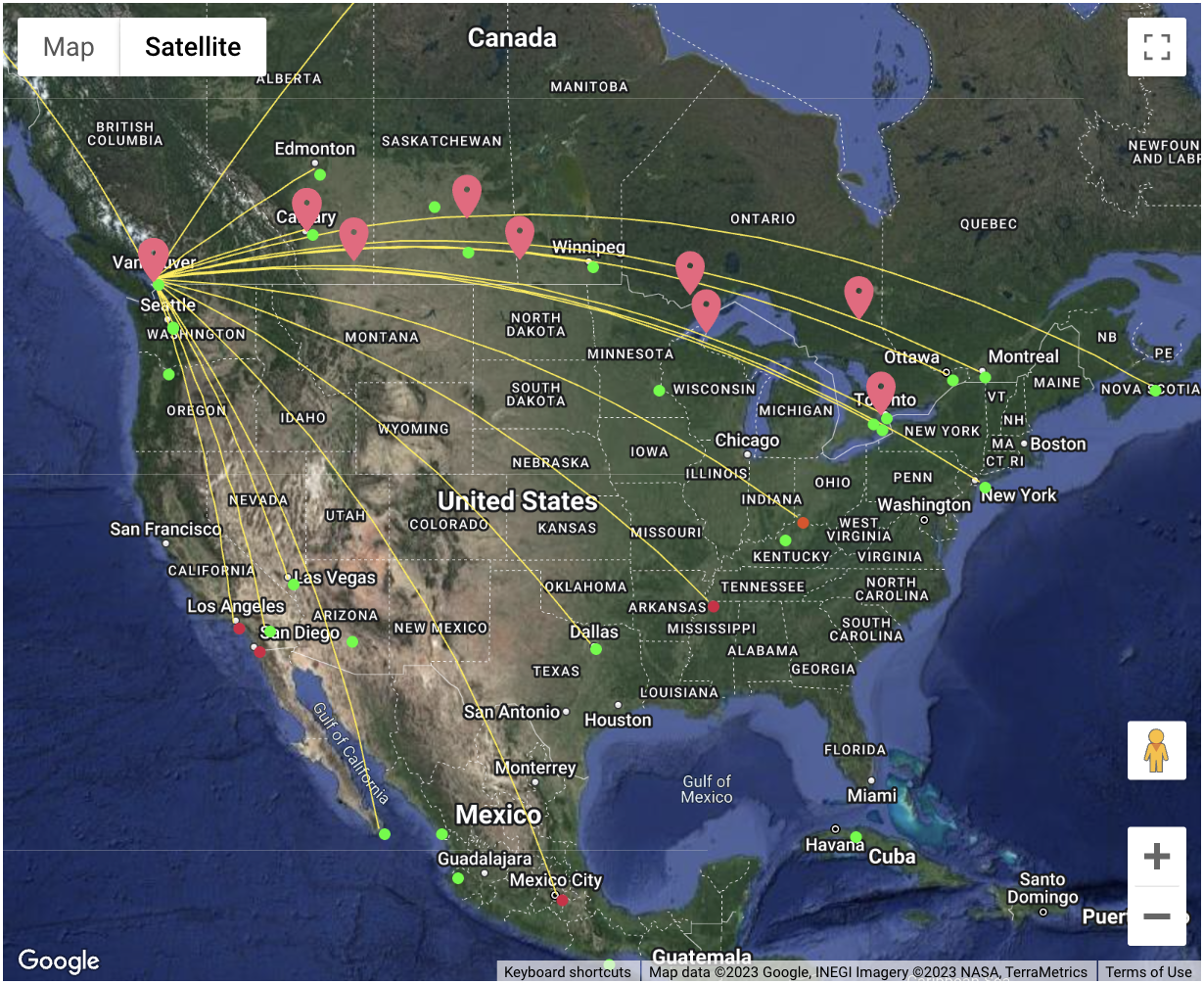
Supported data types
The following table outlines the data types supported by the Map component:
| Channel Type | Supported? |
|---|---|
| Tag | ⚫ |
| Asset (Attributes) | 🟢 |
| Timeframe (Attributes) | ⚫ |
| Tag Search | ⚫ |
| Asset Search | ⚫ |
| Timeframe Search | ⚫ |
Quick Start
To quickly start using the Map component, drag and drop it onto the work area. Search for the data you want to visualize, select the desired latitude and longitude, and map it onto the component:
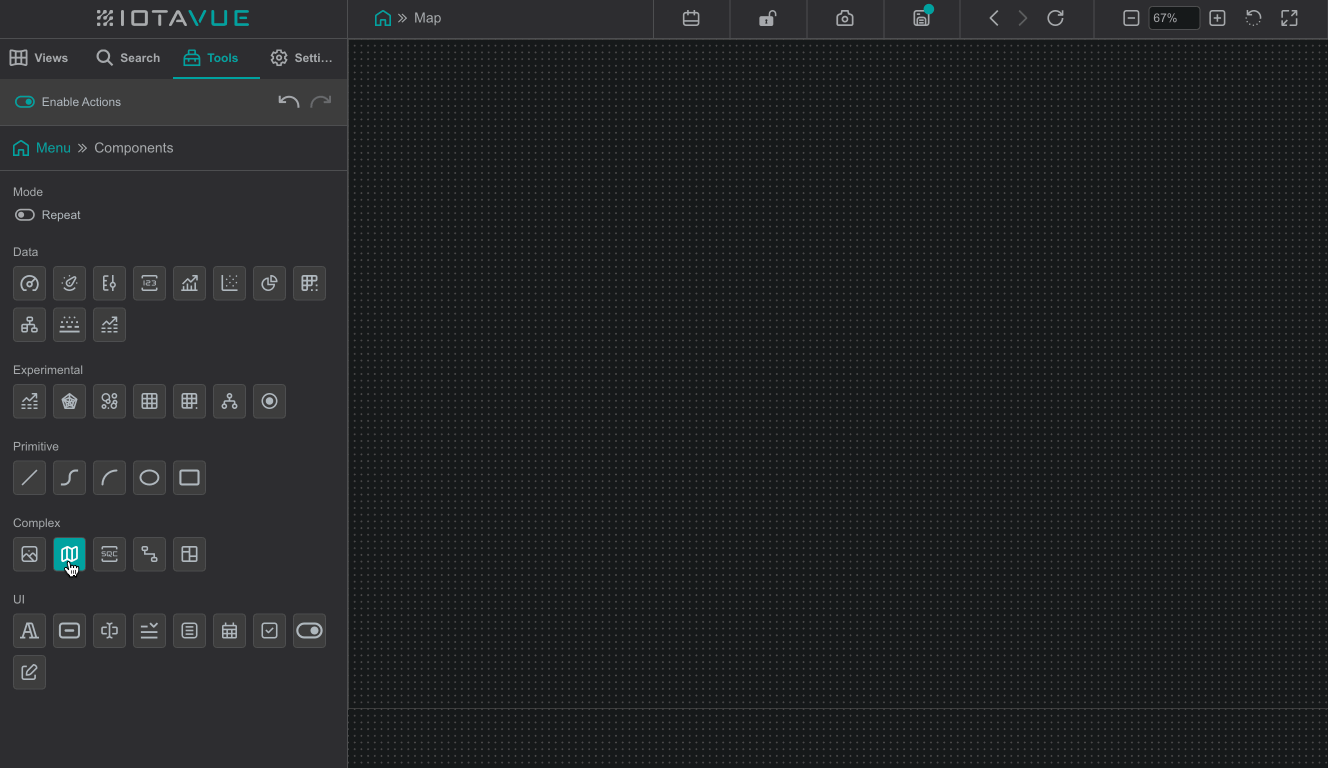
Generic Settings
Each IOTA Component has settings that are shared across most components. To view these settings, expand the corresponding section below:
Workspace
These settings are applicable to the whole view.
Grid Properties
The grid is provided for convenience when developing dashboards as visual guides and snapping capability.
By default the work area grid is enabled and can be customized or even disabled in this menu.
| Property Name | Description |
|---|---|
| Grid Color | Color of the grid |
| Grid Size | Size of the grid step |
| Snap to Grid | Enable/Disable snapping to the grid |
| Show Grid Lines | Show the grid as lines |
| Show Grid Dots | Show the grid as dots |
Align Controls
The Align controls provides a means to align and distribute selected objects on the display.
Align Objects
- You can align several components horizontally using the
Align-left,Align-centerorAlign-rightcontrols - You can align several components vertically using the
Align-top,Align-vertical-centerorAlign-bottomcontrols
Distribute Objects
- You can distribute several components on the vertical/horizontal axis by selecting them (select at least 3 components) and pressing
Align-vertical/Align-horizontal - You can make all the selected components the same width/height by selecting them and pressing
Adjust Width/Adjust Height
Tips
Hold the Ctrl button to select several components. The eldest component is used as a reference.
Anchor Points Options
The anchor points are eight squares around an object that allow you to resize the object. The anchor point options allow you to define the appearance of the anchor points.
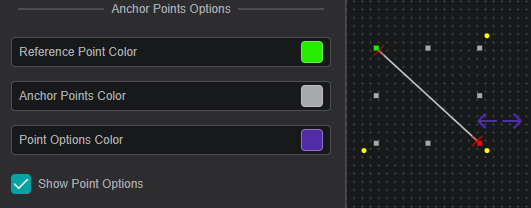
| Property Name | Description |
|---|---|
| Reference Point Color | Sets the color of the reference point (see Rotation and Position for more details) |
| Anchor Points Color | Sets the color of the rest of the seven anchor points |
| Point Options Color | Sets the color of the point options (only for Line and Bezier Curve) |
| Show Point Options | Show/Hide the point options |
Locked View Options
These options define the appearance of the component border in the locked view for the selected component.
| Property Name | Description |
|---|---|
| Active Border Fill | Sets the fill color of the border |
| Active Border Width | Sets the width of the border |
Variable
Every component has a unique variable name. This variable name can be used to reference the component in multi-state configurations and other scripts.
On creation, every component is given a default name. This can be overwritten to be more user-friendly. To do so simply overwrite the value in the variable input field.
Arrange / Remove

- Send Backward - move object one layer down
- Bring Forward - move object one layer up
- Send to Back - place object under all layers
- Bring to Front - place object above all layers
To send/bring objects to the front/back use the first four buttons. - Any set of components can be deleted by either using the
button or
delete/delkeyboard keys.
Rotation and Position
Reference Anchor Point- allows you to select one of the anchor points as a reference so that you can set anAngle(clockwise) of incline relative to this point. By default the reference anchor point is the top left corner. You can also rotate the component by dragging one of the yellow corner points.- You can set the position of the component by setting the
XandYcoordinates relative to theReference Anchor Pointand the top-left corner of the work area. - You can drag any of the anchor points to change the width and height of the component, or you can set it manually by editing the
WidthandHeightboxes. - Set
Lock Aspect Ratioso that while changing width and height, the component width to height ratio stays the same Transformallows you to view the component as a mirror or a reflection of itself
Actions
Actions or multi-states are programmable conditional states handled by user-generated code.
Note
Actions that have script handlers are marked with a circle
in the top right corner.
The currently supported actions are described in the table below:
| Action | Trigger |
|---|---|
| OnCreate | When the component is created |
| OnFocus | When the component is selected |
| onClick | When the component is clicked or the selection is changed |
| onData | Each time the data changes for assigned channels |
| onTick | 20 times per second |
| onDblClick | On mouse double click |
| onHover | When the mouse is over the component (and not when the mouse is not) |
Further Reading
For helping you in writing your own actions, consider exploring the available Actions Deep Dive, as well as the Quick Start manual.
Also, multiple articles are available in IOTA's Knowledge Base.
Pin Options
All components can receive data through pins; however, the Tree and Table components can also output data to feed other components. You can establish these connections between components in two ways: the Actions menu (refer to Generic Settings) or using the pins feature.
To connect the table with the pins feature to other components, follow these steps:
- Pin a Connector to one of 8 available connection points:
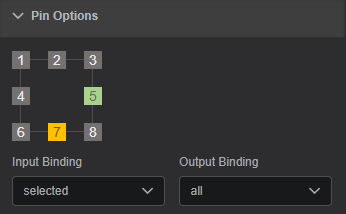
- Connect the
Connectorto another component - Choose an option from the corresponding and pin's drop-down menu. The table and tree components can send data to other components (Output Binding) and receive data (Input Binding).
Color legend for pins:
| Symbol | Function |
|---|---|
| Bound Input Pin | |
| Bound Output Pin | |
| Unbound Pin |
Each pin offers the following options in the drop-down menu:
all(output): transfers all channelsselected(output): transfers only selected channelsisSelected(output): transfersTrueif the component is selectedenabled(input): enables or disables the component based on the value read from pin
Please refer to Connector page for more details on how to use pins and connectors.
Attribute Mapping
When an asset is assigned as a channel, IOTA Vue allows you to map only necessary attributes to the component. This is done via Attribute Mapping, which exists for every asset channel.
In fact, Attribute Mapping is tied to the template of the asset. You can edit or remove the selected Attribute Mapping.
Note
This section is shown in the component settings only if there is an asset mapped to the component.
Properties
Using the Attribute Mapping Dialog you can add attributes to the current mapping and change their properties:
- Add attributes to the current mapping one by one with the
Addbutton or all at once with theAdd Allbutton - To hide an attribute click on
Toggle Visibility - To access to Attributes properties click on
Properties - To save the attribute mapping (without adding the current channel) press
Train Only - To save the attribute mapping and add the current channel press
Train and Add - To exit the screen without saving your changes, press
Close
Channels
The Channels section lists data that is assigned/mapped onto the component.
In this menu, you can change the data value color, adjust the display properties and un-assign or remove the data from the component.
Properties
The properties menu for Channels allows you:
- to modify the Label of the DataSource
- to set UOM, lower and upper values
- to choose number format and displayed digits
- to adjust the line formatting for trend line components
- to configure the additional regression lines that can be plotted for supported components

Supported Multi-State Parameters
Each of the the visual parameters listed below can be used as a multi-state, i.e. used in actions and scripts:
- Title and Text
- Text
- Rotation and Position
- Rotation
- Common
- Blink
- Hidden
- Visual Properties
- Border Color
- Border Width
- Border Radius
- Marker Color
- Marker Scale
- Feature Color
- Feature Width
- Label Color
- Label Offset-X
- Label Offset-Y
- Pin Options
- Current Pin Option
- Pin Input
- Pin Output
- Component Specific
- Marker Cluster
- Grouping Field
- Marker Movable
- Geo JSON
- Marker icon
- Format
- Number Format
- Display Digits
- Pin Options
- Current Pin Option
- Pin Input
- Pin Output
Map Settings
Visual Properties
The Visual Properties section provides options for customizing the component's appearance by changing the color schema.
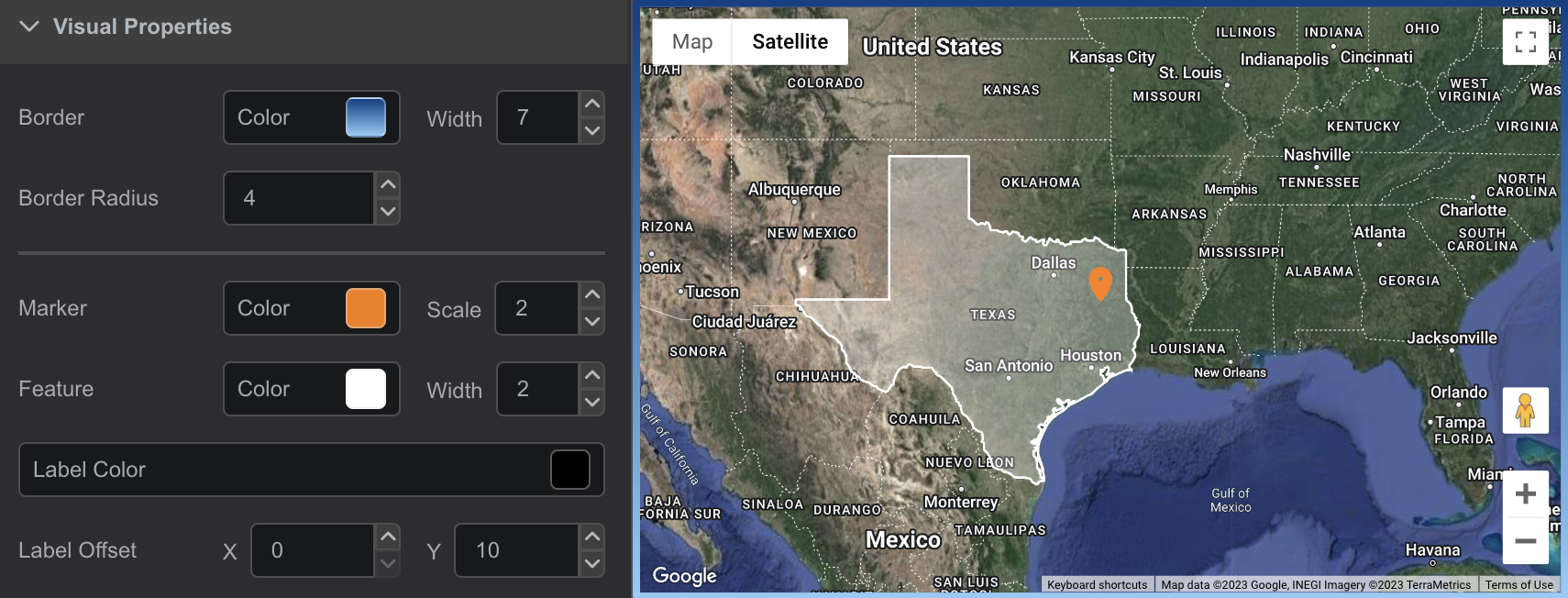
Border Color: Defines the component's border colorBorder Width: Controls the width of the border frame. Default: 0 - invisible borderBorder Radius: Defines the radius of the component's cornersMarker Color: Defines the color of the markerMarker Scale: Defines the size of the markerFeature Color: Defines the color of the featureFeature Width: Defines the width of the featureLabel Color: Defines the color of the labelLabel Offset X: Defines the horizontal offset of the label. Default: 0pxLabel Offset Y: Defines the vertical offset of the label. Default: 10px
For more information about adding a feature to the map, see the Geo JSON section below.
To pick color of your interest
- To change color for specific visual property, click on the color box next to property description. The color picker dialog will be displayed.

- Pick the color of interest. The video below shows how to choose a solid, gradient or theme color.
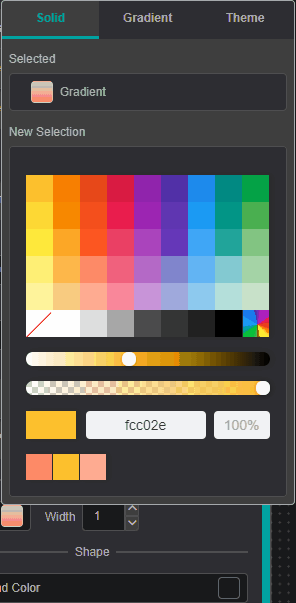
You can add Gradient Stops by double clicking and to remove - by pulling it up.
- To close the color-picker dialog - click on the property color box (Step 1).
Closing color-picker dialog
Clicking on the workspace area instead of Settings Tab area -
component settings will disappear since component focus will be lost.
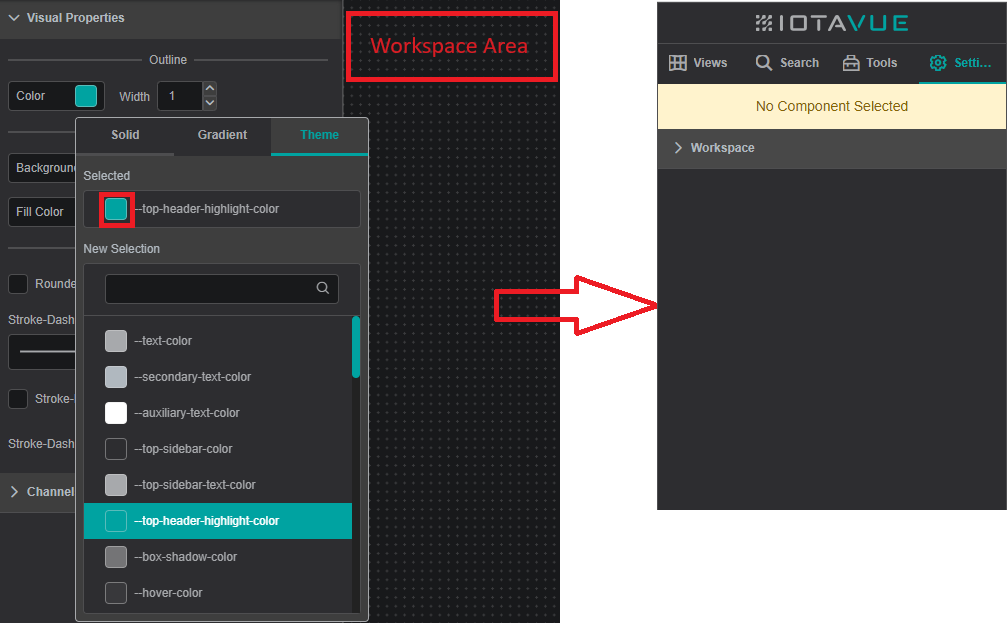
Component Specific
The Component Specific section provides options for modifying various properties for the Map.
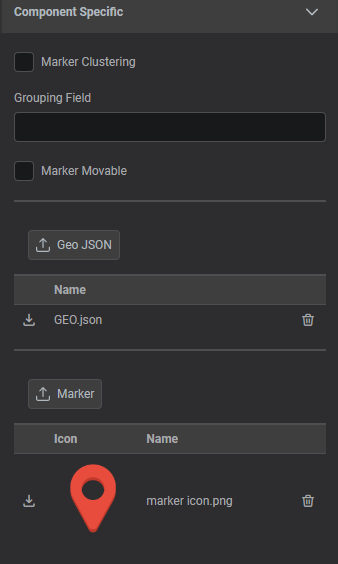
Marker Clustering: Groups nearby markers into circles, with tally sizes adjusting dynamically to the map's zoom level.
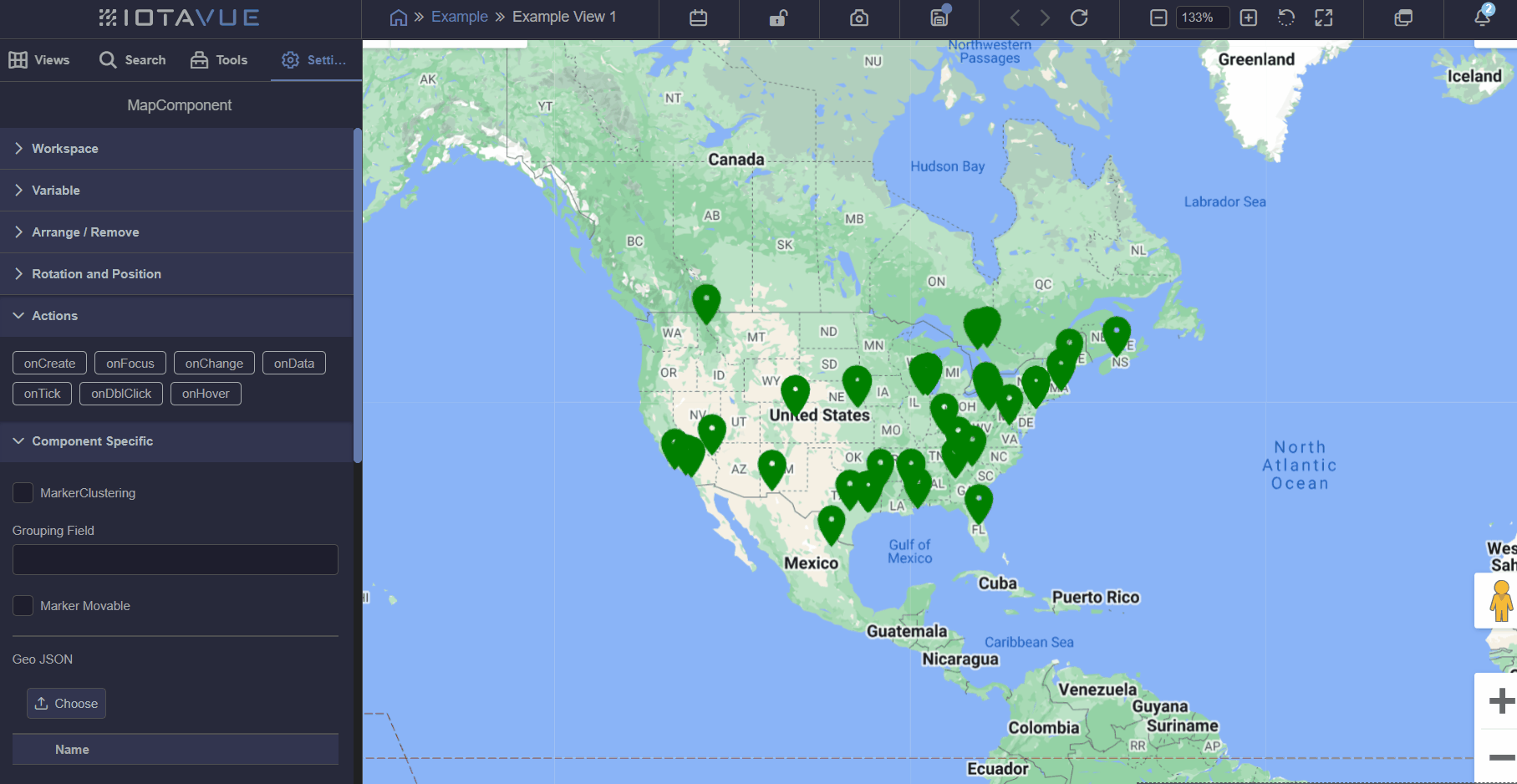
Grouping Field: Defines the field of the Geo JSON file that is used to group the dataMarker Movable: Defines whether the marker is movableMarker: Defines icon used for marker (can be uploaded through Attribute Mapping section)
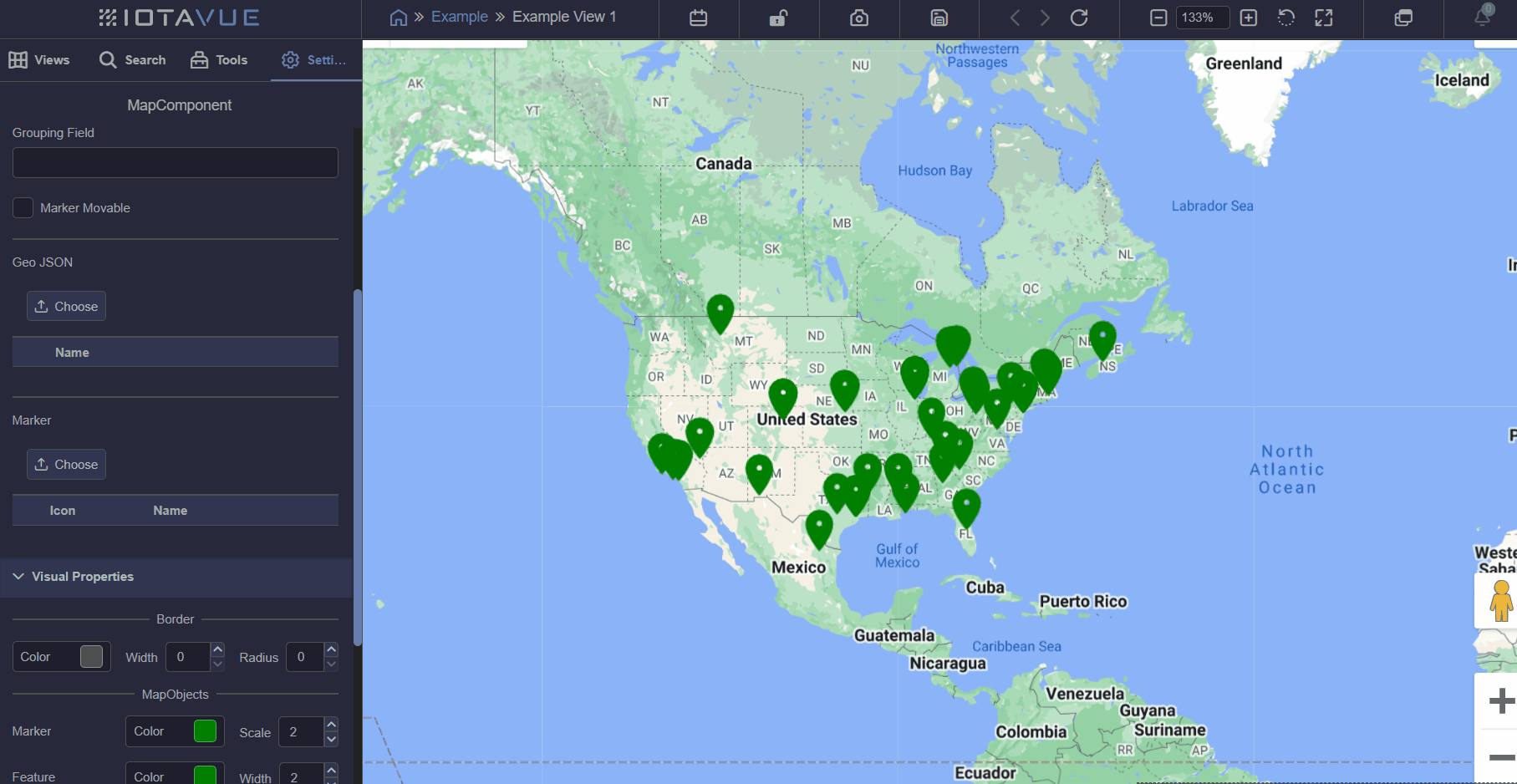
Geo JSON: Defines Geo JSON file used for theMapcomponent
Geo JSON
To add a Geo JSON file as a feature to the map, click on the button and select the JSON file from your computer.
Example Geo JSON File
{
"_id":"colorado",
"type":"Feature",
"properties":{
"name":"Colorado",
"group":"US States"
},
"geometry":{
"coordinates":[
[
[
-109.050027,
41.000690
],
[
-102.051717,
41.002359
],
[
-102.042101,
36.993019
],
[
-109.045172,
36.998977
],
[
-109.050027,
41.000690
]
]
],
"type":"Polygon"
}
}Download Geo JSON file and Marker icon
The Geo JSON file and marker icon are downloadable. To extract an existing file after it has been uploaded to IOTA, click on button.
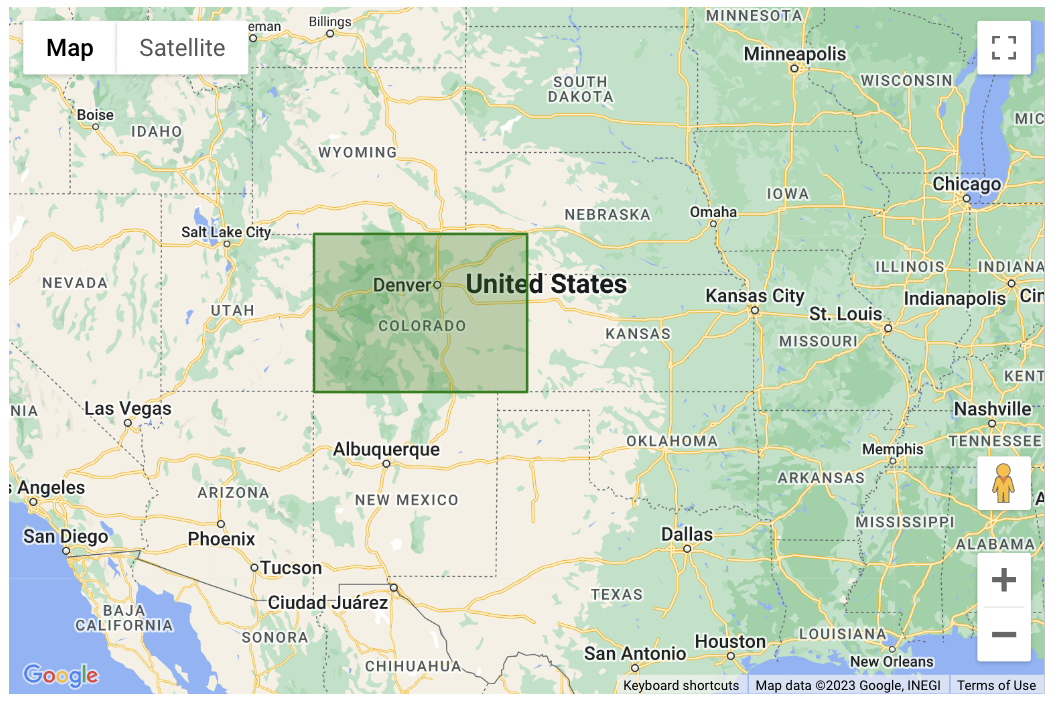
Attribute Mapping
The Attribute Mapping section allows you to map the component's properties to the attributes of the selected asset. For more details on attribute mapping, see Attribute Mapping in the Generic Settings.
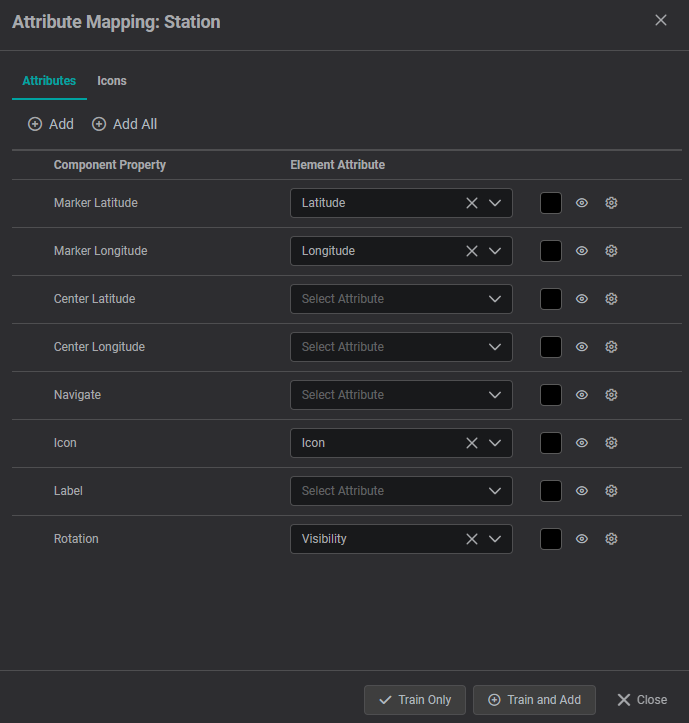
Marker Latitude: Defines the latitude of the markerMarker Longitude: Defines the longitude of the markerCenter Latitude: Defines the latitude of the map centerCenter Longitude: Defines the longitude of the map centerNavigate: Navigates to the view specified in the attributeIcon: Defines the icon of the marker (.svg in the attribute)Label: Defines the label (text) near the markerRotation: Adds rotation to the marker
Marker Icon can be uploaded in the Icon tab.
Example with Drill-down
